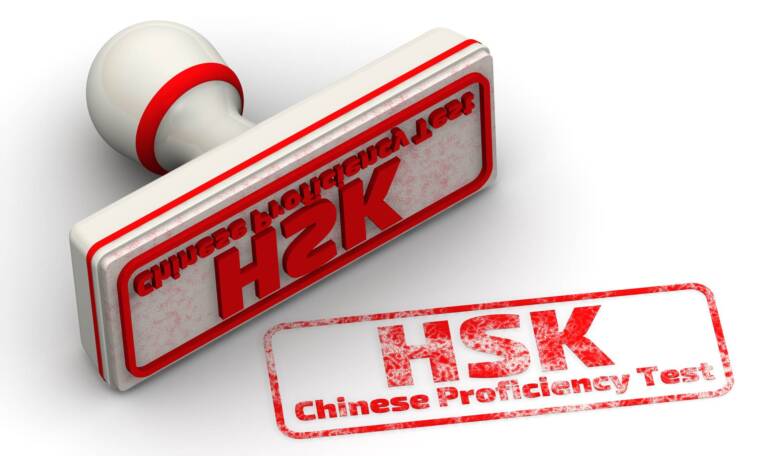speak fluent chinese 3-5x faster
Yes! Take the ScorecardYour Guide to Chinese Proficiency Tests and HSK Alternatives

Ever found yourself deep in the rabbit hole of learning Mandarin, only to realize that speaking to a native speaker feels like trying to read a menu in the dark? You’re not alone.
Welcome to the world of Chinese proficiency tests and the quest for the holy grail of language learning: finding the right approach. You’re probably looking for something that doesn’t just measure how well you can fill in the blanks but how effectively you can order your favorite dish in a bustling Beijing street food market without accidentally ordering spicy frog instead of sweet and sour pork.
Now, you might be familiar with the HSK, the heavyweight champion of Chinese proficiency exams. But there are more HSK alternatives out there than you might think.
So, whether you’re looking to dazzle in the boardroom, charm your way through a semester abroad, or just impress your friends at the next karaoke night, we’ve got you covered.
Quick overview of Chinese proficiency tests and HSK alternatives
If you thought choosing between sweet and sour chicken or Kung Pao chicken was tough, wait until you dive into the range of Chinese proficiency tests available. It’s like standing in front of a dim sum cart for the first time — all the options look amazing, but where do you even start? Don’t worry. We’re here to help you understand the choices.
The Grandmaster: HSK
The Hanyu Shuiping Kaoshi, or HSK as it’s affectionately known by those who can’t twist their tongue around its full title, is the Bruce Lee of Chinese tests — widely recognized, respected, and a bit intimidating. With levels ranging from I can say “Ni Hao” to I can debate Confucian philosophy, there’s a spot for everyone.
The Friendly Neighbors: HSK Alternatives
Yes, the HSK might be the most famous kid on the block, but sometimes you want to hang out with the other kids, too, especially if they play games that are more your style.
- TOCFL (Test of Chinese as a Foreign Language): This is like the HSK’s Taiwanese cousin. It’s fantastic for those looking to immerse themselves in traditional Chinese characters and the linguistic nuances of Taiwan. It’s your go-to if you dream of exploring the night markets of Taipei like a pro.
- YCT (Youth Chinese Test): Think of the YCT as the little sibling in the proficiency test family, designed with the younger crowd in mind. But don’t let that fool you. This test packs a punch with its practical approach to language learning. Who said you can’t teach an old dog new tricks?
- BCT (Business Chinese Test): For aspiring moguls and entrepreneurs, the BCT focuses on the language of deals and dollars (or yuan, in this case). If you’re looking to impress in the boardroom or sweet-talk suppliers in Shenzhen, this might just be your secret weapon.
The Underdog: HSKK (Hanyu Shuiping Kouyu Kaoshi)
Not to be overlooked, the HSKK tests your ability to chat your way through China. If your goal is to gossip with locals about the latest TV dramas or negotiate prices in a Beijing bazaar, mastering the HSKK is like getting a backstage pass to the real China.
Related Reading: How Sacrificing Instant Gratification Helped Me Learn Chinese Faster
Choosing the right proficiency test

Deciding between Chinese proficiency can be tricky. But whether you’re after the HSK alternatives or sticking to the HSK itself, we’ve got some tips to help you pick the test that’s just right for you.
Know your goals
First up, what’s your endgame? If you’re aiming to conquer the academic world, the HSK might be your ticket to the university gates. However, if you’re more about closing deals and networking over tea, the BCT could be more your speed. And for those of you who are still sprouting your language legs, the YCT or TOCFL might offer a gentler introduction to the Mandarin-speaking world.
Assess your level
Be honest with yourself — are you a beginner who’s just learned to say “Where’s the bathroom?” without causing international confusion, or are you at the point where you’re dreaming in Mandarin? Your current level can guide you toward the right test. Beginners might find the YCT or initial levels of the TOCFL more encouraging, while advanced speakers could be ready to tackle the higher echelons of the HSK.
Consider the format
Some of us love the smell of pencil shavings and the feel of paper under our palms, while others thrive with the clickety-clack of a keyboard. Consider the test format — HSK, for instance, offers both paper-based and computer-based options. Choosing a format that makes you comfortable can be as crucial as knowing your radicals from your tones.
Look beyond the test
Remember, the best Chinese proficiency tests are the ones that align with your learning style and goals, but no test can measure the thrill of successfully ordering bubble tea in flawless Mandarin or exploring the streets of Taipei without a translator app. Consider how each test’s focus aligns with your real-world language aspirations.
Related Reading: How to Learn Chinese Easily
The unexpected perks of Mandarin proficiency certification
Whether you’re cannonballing straight into HSK territory or dipping your toes into the waters of HSK alternatives, you’re in for some delightful surprises along the way.
Unlocking doors, literally and figuratively
Visualize having a job interview in fluent Mandarin and the look of impressed appreciation on your future employer’s face. Think about the ease with which you’ll access exclusive cultural content, from original Chinese literature to blockbuster movies, all because you can understand the language deeply and richly. These tests don’t just open doors — they break down barriers, connecting you to a world that was once beyond reach.
Bragging rights
Let’s not be modest. Earning a Mandarin proficiency certificate is like earning a badge of honor. It’s tangible proof that you can tackle Mandarin grammar and vocabulary without breaking a sweat. Flaunting your certificate (even if just metaphorically) can give you a confidence boost, not to mention some serious street cred in language learning circles.
The fine print
Beyond the obvious academic and professional perks, there’s a subtler benefit to these certificates. They teach you to read between the lines, to understand cultural nuances and idiomatic expressions that you won’t find in textbooks. It’s like learning to appreciate the delicate flavors of Sichuan cuisine beyond just the spice.
A passport to culture
More than just a certificate, your Mandarin proficiency is a passport to a rich cultural experience. It’s about being able to exchange stories with a vendor in a Chengdu market, understand the lyrics of a Mandarin pop song, or enjoy the humor in a Chinese blockbuster without the subtitles. These moments are the real perks.
Chinese proficiency tests aren’t just about adding a line to your resume or a certificate to your wall. It’s about opening a world where language is the key to deeper connections, richer experiences, and a larger playground for your curiosity to roam free. So, as you prepare for this adventure, remember that the greatest reward isn’t just passing the test — it’s the world that opens up to you when you do.
Related Reading: Debunked: Common Myths about Learning Chinese
Preparation strategies for success in Chinese proficiency tests
Getting ready for Chinese proficiency tests is like planning a trip to explore new places. It involves understanding the map, packing the right tools, and preparing for the journey ahead. Here’s how to equip yourself for this adventure, ensuring you’re ready to tackle any challenge these tests might throw your way.
Gathering your gear
First things first, you’ll need to gather your study materials. For the HSK, there are official guides and textbooks that cover the exam format and content exhaustively. If you’re heading into the world of HSK alternatives, make sure to get the specific resources tailored to each test.
Structured study plan
Break down your study sessions into manageable segments, focusing on different language skills (listening, speaking, reading, writing). Allocate more time to areas that need extra attention, and make sure to schedule regular reviews of previously covered material to reinforce your knowledge.
Practice makes perfect
Every language learner gains confidence through practice. Take advantage of mock exams for the HSK or any HSK alternatives you’re considering. These practice runs provide a realistic preview of the test environment, helping you manage time effectively and identify areas where you need further study.
The importance of immersion
We’ve said it before and we’ll say it again. Immersion is the open secret of language learning. While books and exams are invaluable tools, immersing yourself in the language environment offers unparalleled benefits. Engage with Mandarin through movies, music, podcasts, and conversations with other learners. This approach enriches your understanding of the language’s nuances and boosts your ability to think and respond in Mandarin.
Related Reading: Can You Learn Chinese While You Sleep?
Your burning questions answered

Curiosity might have been tough on the cat, but it’s the best friend of any language learner. As you gear up to tackle Chinese proficiency tests, you’re bound to have a few questions. Don’t worry; you’re not alone in wondering about the best route to Mandarin mastery. Here are some questions you might be asking yourself.
1. What are the best Chinese proficiency tests for someone who still gets tongue-tied ordering in Chinese restaurants?
Whether you’re just starting out or looking to polish your skills, there’s a test for every stage of your journey. From the foundational levels of the HSK to the more specialized HSK alternatives, there’s a fit for everyone — even if “ni hao” is currently your go-to phrase.
2. Are there any HSK alternatives that won’t make me break out in a cold sweat?
Absolutely! If the thought of the HSK makes you nervous, there are plenty of other options that might better suit your learning style or goals. TOCFL, for instance, could be your ticket if you’re enchanted by the allure of Taiwan. Remember, the right test for you is the one that aligns with your aspirations and current proficiency level.
3. How do I prepare for Chinese proficiency tests without turning my life into a montage of flashcards and grammar drills?
Mix it up! While traditional study methods have their place, incorporating elements like language exchange meetups, watching Chinese TV shows, or even following Mandarin social media accounts can add flavor to your study routine. Diverse experiences will not only keep you engaged but also expose you to the language as it’s used in everyday life.
4. How can I tell if I’m ready to take one of these tests?
If you can understand the gist of a Chinese drama without subtitles or share your thoughts on various topics without resorting to a translating app, you’re probably ready to take the plunge. Mock exams are also a great way to gauge your readiness. If you’re scoring consistently well, it might be time to sign up for the real deal.
5. What if I take a test and it doesn’t go as planned?
Language learning is a journey, not a sprint. If a test doesn’t go your way, take it as a learning experience. Review your results to identify areas for improvement, and don’t be too hard on yourself. Remember, every mistake is just a stepping stone to fluency.
Related Reading: The 10 Biggest Challenges for Chinese Learners SOLVED
Rethinking Mandarin proficiency beyond the test scores
Chinese proficiency tests can sometimes feel like you’re on a never-ending quest for the Holy Grail of language learning. But let’s hit the pause button and think about what truly matters in terms of your goals.
The real measure of fluency
While proficiency tests offer a snapshot of your language skills under exam conditions, they often miss the mark in capturing your ability to thrive in spontaneous conversations or appreciate the subtleties of Chinese culture.
Imagine acing every test but freezing up when ordering your favorite dish in a bustling Beijing eatery or missing the punchline of a joke during a Taiwanese variety show. That’s where the real challenge lies — not just in knowing the language but in living it.
Real-world skills
True mastery is measured in moments. Chatting with a local vendor, tackling a negotiation in a Shanghai boardroom, or sharing stories with new friends over a steaming hotpot. These real-life scenarios test your linguistic mettle far more than any standardized exam could. They demand not only a command of grammar and vocabulary but an understanding of context, culture, and the art of conversation.
Immersion and consistency
The Mandarin Blueprint philosophy shines a spotlight on immersion and consistency as the cornerstones of language learning. Rather than spending hours memorizing character lists and grammar rules, imagine immersing yourself in the sights and sounds of Mandarin daily.
Whether it’s through films, podcasts, or chatting with native speakers, consistent, meaningful exposure is key. This approach transforms language learning from a daunting task into a vibrant, enjoyable part of your daily life.
Certification is a stepping stone, not the destination
Don’t get us wrong — achieving certification, whether through the HSK, TOCFL, or any other test, is a brilliant milestone. It can open doors to academic opportunities, enhance your resume, and provide a tangible goal to work towards.
However, it’s important to remember that these certifications are just part of the journey, not the end goal. The real prize is the ability to connect, understand, and interact with the Mandarin-speaking world in a meaningful way.
In the end, the quest for Mandarin proficiency is about finding the right balance between formal study and rich, unpredictable real-world experiences. By using both structured learning and the spontaneity of immersion, you’re not just preparing to pass a test—you’re gearing up for a lifetime of discovery and connection.
So go ahead, prepare for those Chinese proficiency tests, and explore HSK alternatives, but remember: the true test of fluency is out there in the vibrant, bustling world of Mandarin speakers.
Related Reading: The True Cost of Fluent Chinese (Way Less than You Think)
The journey ahead with Chinese proficiency tests
Armed with insights into Chinese proficiency tests and the array of HSK alternatives, you’re not just equipped with the knowledge for preparation but also standing at the gateway to a world rich with opportunities and cultural depth.
It’s natural to feel a whirlwind of excitement and perhaps a touch of apprehension, but remember, the journey to language proficiency is as enriching as it is transformative, and you’re in good company.
Are you ready to learn Mandarin in a way that’s both faster and easier? It’s time to take the first step towards not just enhancing your language skills but truly integrating Mandarin into your life. With the FREE Mandarin Fluency Scorecard, you’re not just assessing your current language abilities; you’re getting a tailored guide designed to propel you toward fluency.
By completing the Mandarin Fluency Scorecard (which takes less than a minute), you’ll know the path ahead, identifying precisely where you stand on your language learning journey. Whether it’s fine-tuning your pronunciation or expanding your vocabulary, you’ll discover the next steps tailored to your current level.
Go deeper than ever before with a custom report brimming with immediate action steps. This isn’t simply about reaching the next milestone; it’s about reshaping the way you learn Mandarin and ensuring each study session moves you closer to fluency. And the best part? It’s completely FREE and takes less than 60 seconds of your time.
As you gear up for whichever Chinese proficiency tests or HSK alternatives you choose, remember that the real essence of this journey lies beyond the exam room. It unfolds in lively dialogues, in the connections you forge, and in the doors you unlock with each new word and phrase mastered. This journey is about embracing a new world of experiences, with Mandarin as your key.
So, why wait? Let’s take this first step together. Let the adventure begin.








